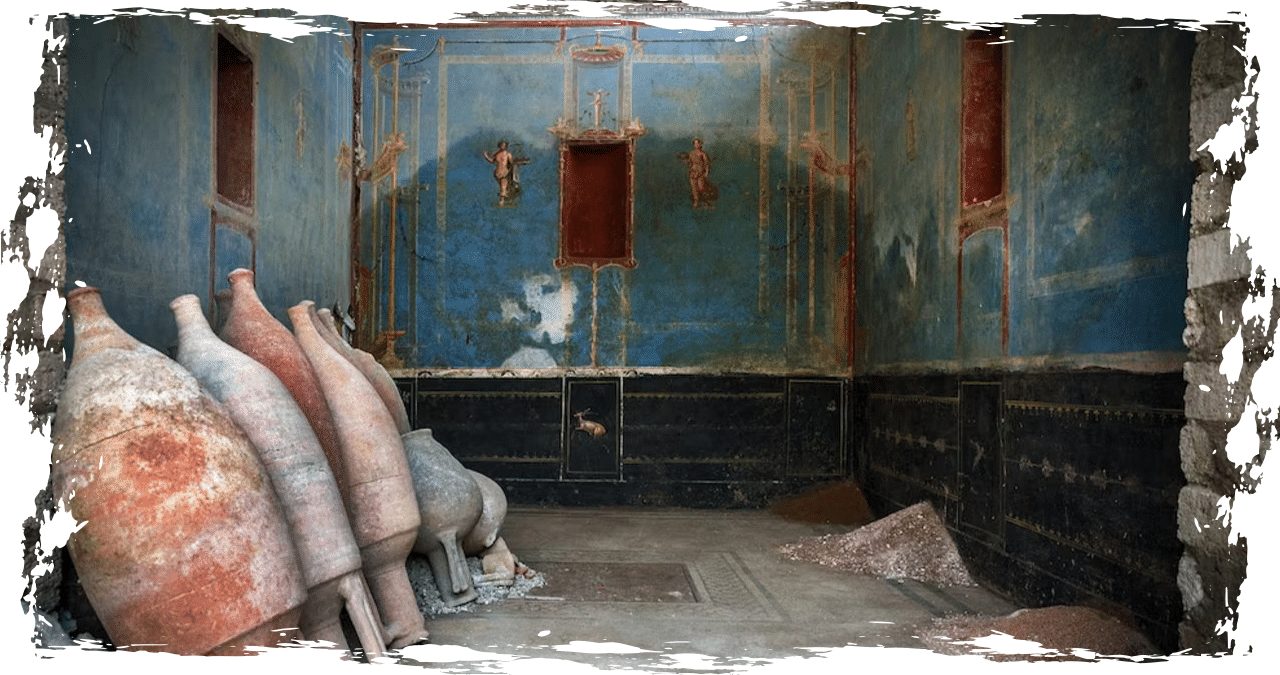The Roman city of Pompeii was devastated by the eruption of Mount Vesuvius thousands of years ago. Despite this, the archaeological site still manages to reveal new discoveries to this day.
Archaeologists have recently unearthed a stunning “blue room” that boasts cerulean-painted walls adorned with depictions of female figures, as stated in a press release by the Archaeological Parks of Pompeii.
During the Bourbon period (1813-1840), a room of nearly 90 square feet was uncovered. After recent excavation, the room was revealed to the public for the first time on May 27.
According to a recent release, it is believed by experts that certain murals depict the four seasons, also known as “Horea”. In addition, other murals are thought to be symbolic of agriculture, featuring images such as a plow and a “pedum” – a short staff commonly used by shepherds and hunters.
Experts have pointed out the significance of the room’s pigment, specifically noting that the color blue used in this room was rarely found in Pompeian frescoes and was usually reserved for intricately decorated spaces.
According to experts, the blue room is a rare sacrarium or Roman sanctuary dedicated to ritual activities and the safekeeping of sacred objects.
Inside the chamber, archaeologists unearthed a collection of artifacts comprising of 15 transport amphorae, also known as large vases, and a set of two jugs and two lamps made of bronze.
Archaeologists discovered a collection of building materials that were prepared for the renovation work. Furthermore, a stack of empty oyster shells was also unearthed.
As per the statement, the preservation of Pompeii’s extensive heritage, consisting of 13,000 rooms in 1070 residential units along with public and sacred areas, is the primary objective of the blue room’s excavation.
During a collaborative mission between the Carabinieri of the Cultural Heritage Protection Center and Pompeii archaeological superintendence in 2018, an exciting discovery was made in a spacious villa located outside the walls of Pompeii, beyond the known archaeological region.



